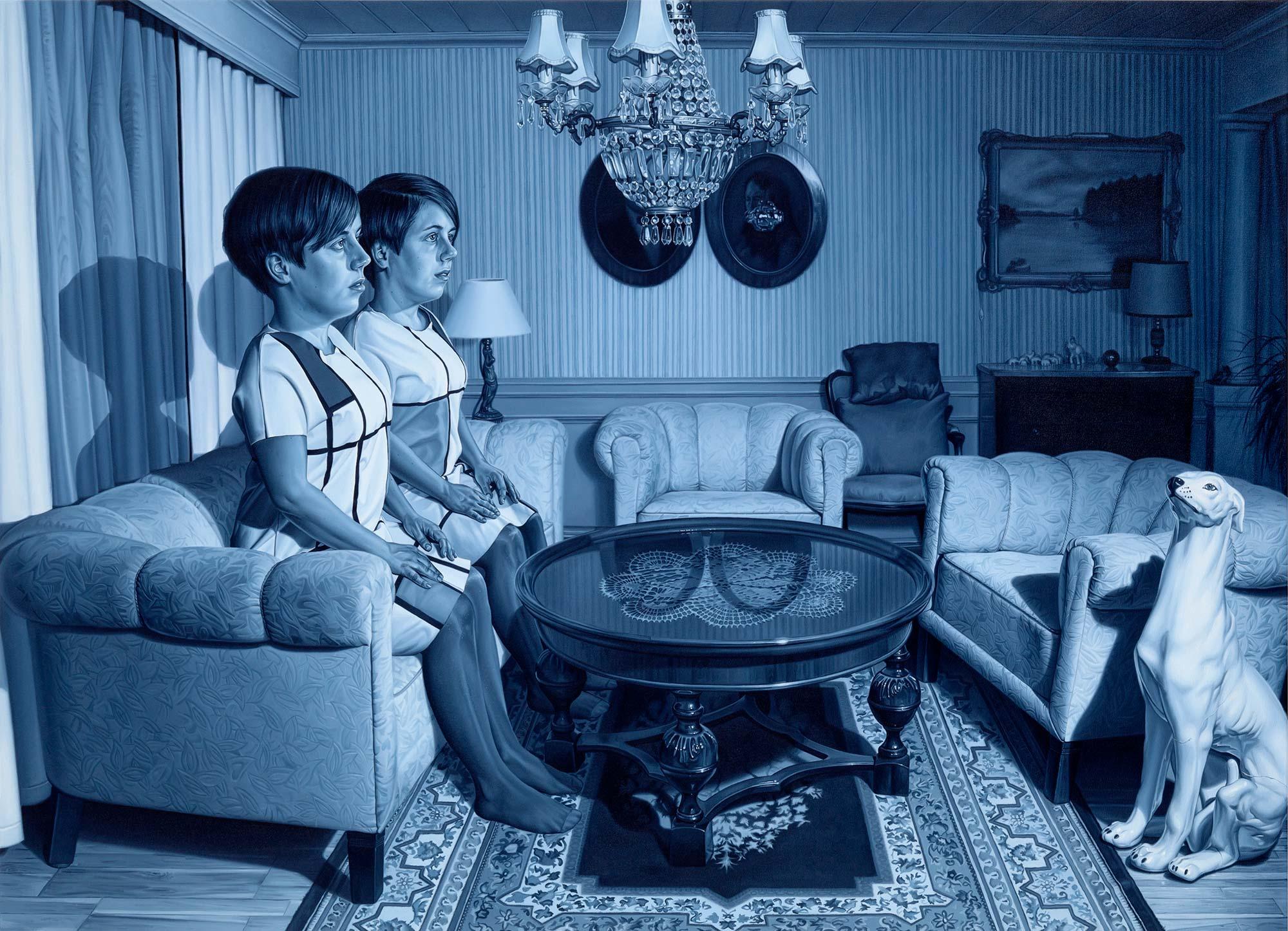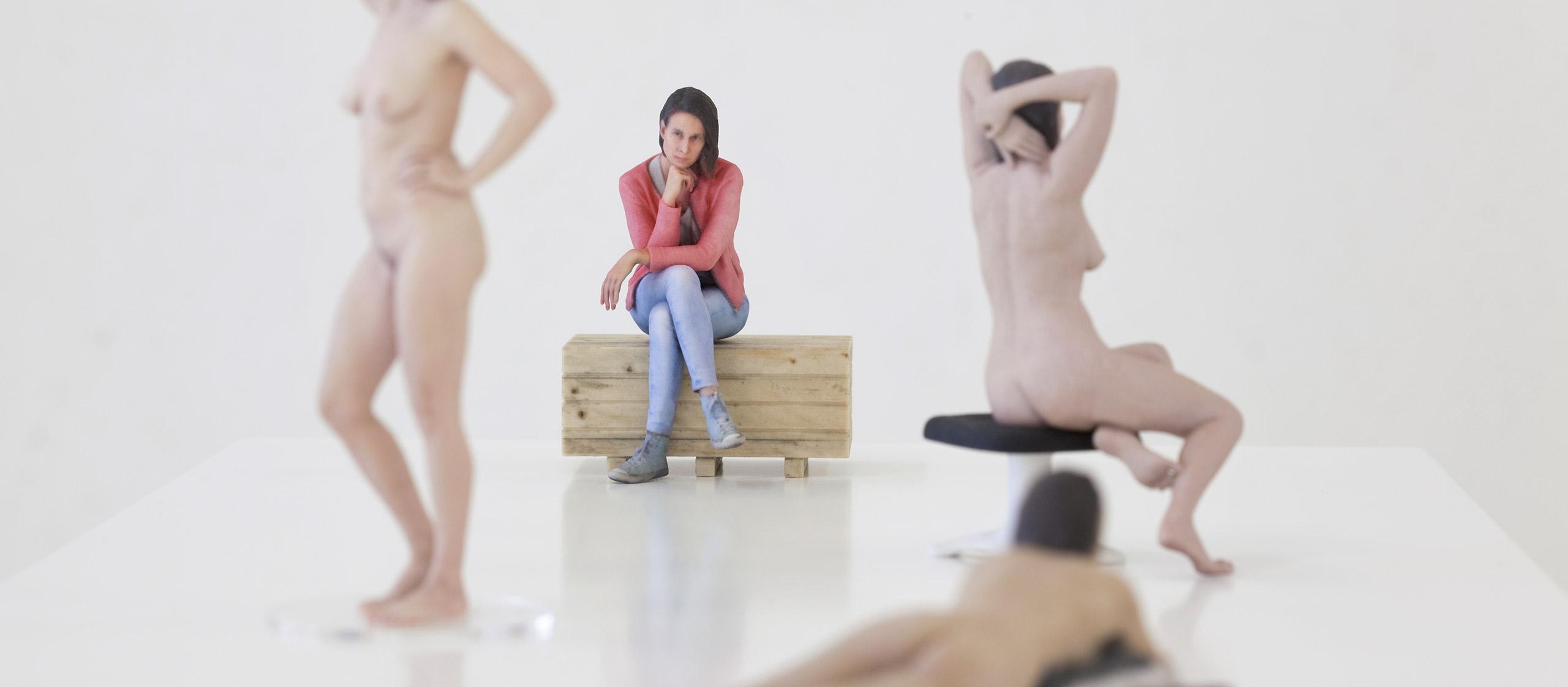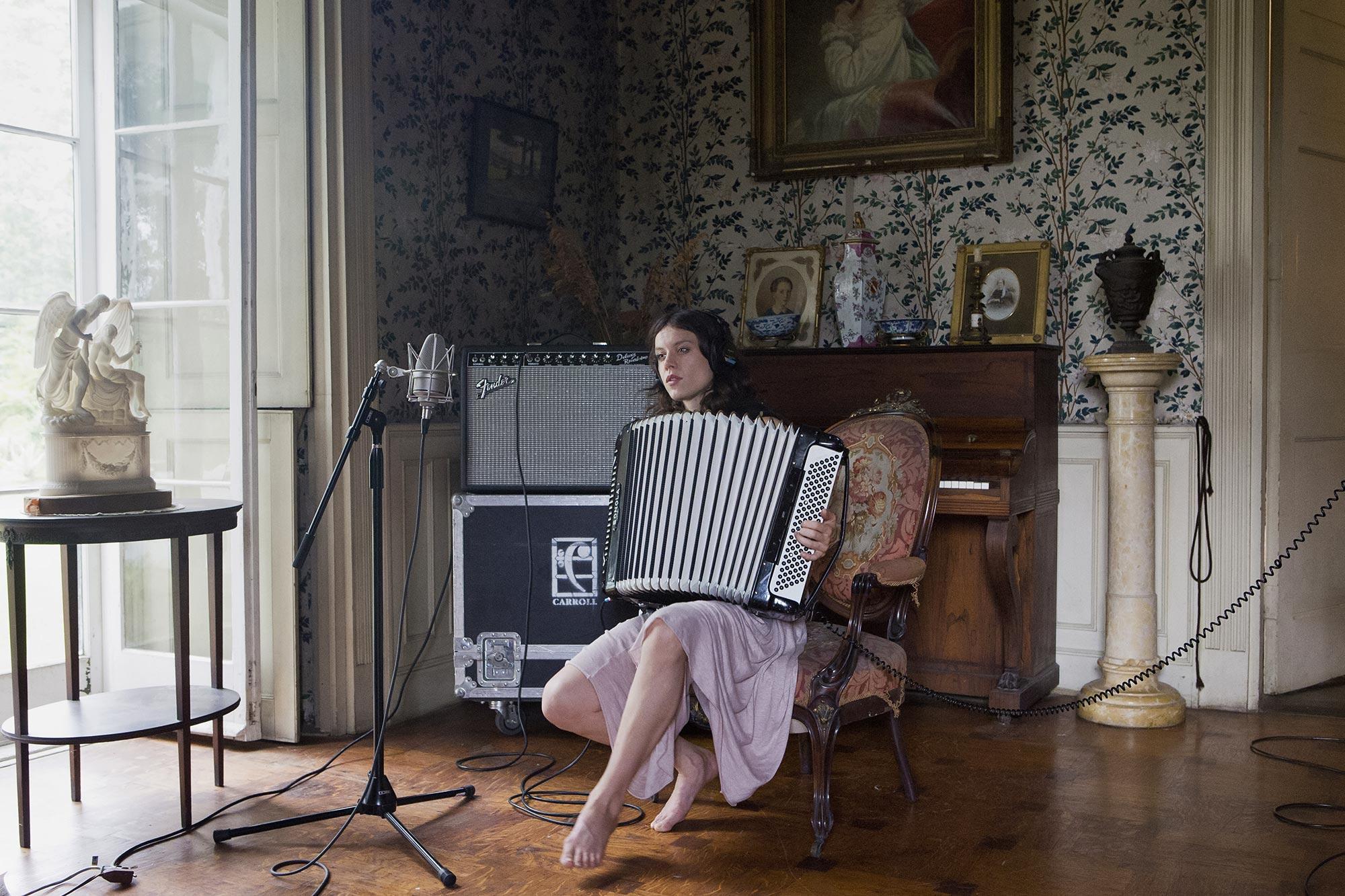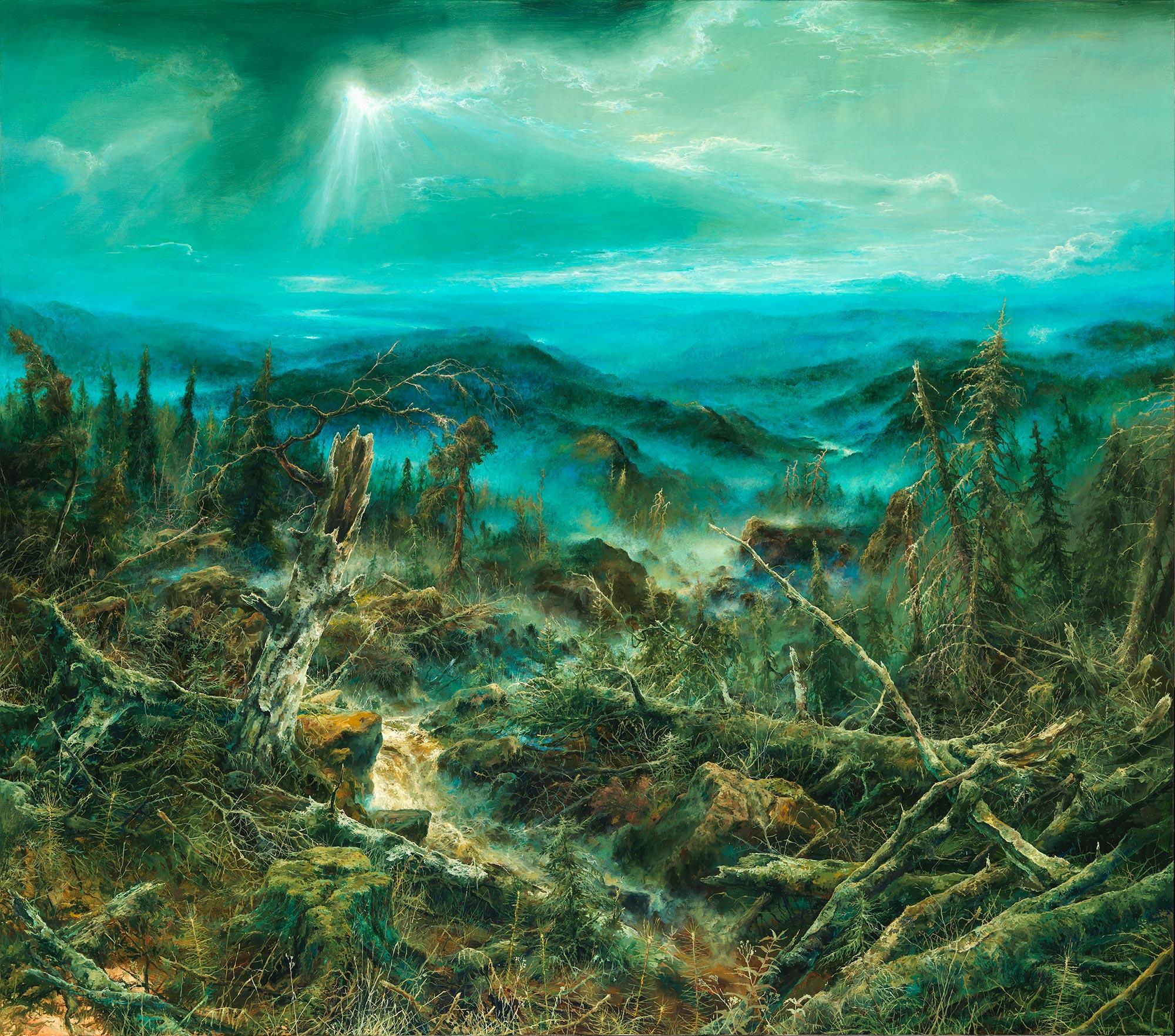
Kari Vehosalo
ARS FENNICA 2017
Kari Vehosalo stages a performative spectacle fusing life and death in an excruciating dance. With extreme photographic and philosophical precision, he weaves together beauty, psychopathology and the history of western trauma culture.
Artwork
Gallery
Introduction
Kari Vehosalo
Kari Vehosalo stages a performative spectacle fusing life and death in an excruciating dance. With extreme photographic and philosophical precision, he weaves together beauty, psychopathology and the history of western trauma culture.
On his canvases, modern iconography is epitomized by Jayne Mansfield, whose sex-oozing physique hurls itself at the viewer with the irresistible force of an automobile speeding towards a head-on collision. The blown-out image of Mansfeld’s car wreck is like a comic-book allusion to the celebrity cult. The complicity of sex and death forms an overarching theme in pop culture all the way from James Dean to Princess Diana.
Another recognizable protagonist appearing in his paintings is Ted Kaczynski, mathematical prodigy, anarchist and father of performative terrorism. Kaczynski, also known as the Unabomber, terrorized the United States for nearly 20 years from the late 1970s to the mid-1990s as a protest against the takeover of society by modern technology. Kaczynski lived as a recluse until his capture.
Vehosalo’s interpretations of solitude, silence and the gaze are a salient testament to western psychopathology, charting its hidden depths throughout the 1900s. Vehosalo’s oeuvre is informed by a tradition cross-fertilizing semiotics and psycho-cultural theory. The grey tonal scale interprets human gestures with infinite precision, a hint of humanity shining through the intense drama in fleeting reminders, painful jabs and passing pangs.
Atte Oksanen | Translattion: Silja Kudel
Expert's statement
// Beatrix Ruf
With my intense encounters with the shortlisted artists for the 2017 Ars Fennica prize – Maija Blåfield, Pekka and Teija Isorättyä, Perttu Saksa, Kari Vehosalo and Camilla Vuorenmaa – still fresh in my mind, I must emphasize the impressively high quality of their artistic projects and the installations and displays at the Kiasma Museum. Making the decision to give the award to one particular artist was not easy, especially considering the power of the exhibition as a whole and the interplay of the artists’ works in it.
Present in the work of all the artists are urgent actual conditions confronting us all with the question of identity, both mentally and physically, and ethical questions laying bare the conditions in which we all live. These confront us in carefully drafted portraits of humans and animals, radical personal exposures and ecological reflections.
Out of this group of artists and their projects I would like to highlight and award this year’s Ars Fennica prize to Kari Vehosalo.
While visiting his studio and seeing his installation in the Ars Fennica exhibition at Kiasma, the profound and striking experience was for me the ghostly rendering of things as we know them. Images, the history of thinking, the history of metaphor and symbol and the function of language all merge into a theatricality of disruption; in Vehosalo’s work, human desires in their many forms of cultural expression have become dysfunctional and are reconfigured.
The body, projections on realities, mythologies and meaning all break down, crash together and become questionable.
The medium of painting is simultaneously fetishized and dissolved through the artist’s precise choice of technique and homogenizing color. The simultaneous use of various artistic techniques from painting, photography and sculpture reverses carefully drafted handiwork into a non-painterly and deeply polluted experience. Everything is “readable” – but it is exactly this misleading perfection of Vehosalo’s paintings, objects and installation that culminates with equal force in physical and mental violence…
Images and materials decompose meaning, the production of images turns into a disconcerting, unsettling, infected and sterile appearance – and our aesthetic, as well as philosophical certainties, bounce off disingenuous beauty.

Beatrix Ruf
Curator

Candidates
Read more on this year's candidates.

Awards
See all Awarded Artists.

Publications
Download our catalogues.






